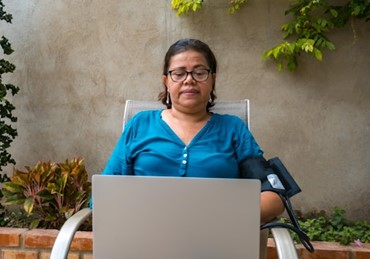Virtual reality (VR) technology, once confined to the realm of entertainment and gaming, is increasingly making significant strides in transforming healthcare practices. John R. Callen explores the diverse applications of VR in therapeutic settings, delves into evidence-based benefits for pain management, anxiety treatment, and rehabilitation, and discusses the challenges and future directions of integrating VR into mainstream healthcare.
Applications of Virtual Reality in Therapeutic Settings
Virtual reality has opened new avenues for treating various medical conditions by immersing patients in computer-generated environments. These applications include:
Pain Management: VR is increasingly used as a non-pharmacological approach to alleviate acute and chronic pain. By distracting patients with immersive experiences, VR can reduce the perception of pain and discomfort during medical procedures or chronic pain episodes.
Anxiety Treatment: VR-based exposure therapy has been effective in treating phobias, post-traumatic stress disorder (PTSD), and generalized anxiety disorders. Patients can confront feared stimuli in a controlled virtual environment, gradually reducing anxiety responses and facilitating desensitization.
Rehabilitation: VR-based rehabilitation programs aid in motor skill recovery for patients recovering from strokes, traumatic brain injuries, or musculoskeletal impairments. Interactive VR environments provide engaging exercises that promote movement, coordination, and balance.
Medical Training: Healthcare professionals benefit from VR simulations for surgical training, medical education, and procedural practice. Virtual scenarios replicate real-world clinical settings, allowing learners to practice skills in a safe, controlled environment.
Evidence-Based Benefits of VR in Healthcare
The adoption of VR in healthcare is supported by a growing body of research demonstrating its therapeutic benefits:
Pain Management: Studies have shown that VR distraction techniques significantly reduce pain intensity and discomfort during medical procedures, such as wound care and dental treatments.
Anxiety Treatment: VR exposure therapy has been effective in reducing anxiety symptoms comparable to traditional in vivo exposure methods, offering a safe alternative for patients resistant to face-to-face therapy.
Rehabilitation: VR-based interventions enhance motor function recovery by engaging patients in repetitive tasks that promote neuroplasticity and motor learning. Patients report increased motivation and adherence to rehabilitation programs.
Medical Training: Virtual simulations improve procedural skills and decision-making abilities among healthcare providers, leading to enhanced patient safety and proficiency in complex medical procedures.
Challenges and Future Directions in VR Integration
Despite its promise, integrating VR into mainstream healthcare poses several challenges:
Cost and Accessibility: High-quality VR equipment and software development are costly, limiting widespread adoption in healthcare settings, particularly in resource-constrained environments.
Regulatory and Ethical Considerations: Ensuring patient safety, data privacy, and adherence to medical regulations are paramount in deploying VR technologies for clinical use.
Evidence Base Expansion: Further research is needed to validate the long-term efficacy and cost-effectiveness of VR interventions across different patient populations and healthcare settings.

Future Directions
Looking ahead, advancements in VR technology hold potential for addressing current challenges and expanding therapeutic applications:
Personalized Healthcare: Tailoring VR interventions to individual patient needs and preferences can optimize treatment outcomes and patient satisfaction.
Remote Care Delivery: Telehealth platforms integrating VR allow healthcare providers to deliver immersive therapies remotely, enhancing access to specialized care and reducing healthcare disparities.
Collaborative Research: Collaborations between VR developers, healthcare providers, and researchers will drive innovation in VR applications, paving the way for novel therapeutic interventions and evidence-based practices.
Conclusion
Virtual reality represents a transformative tool in modern healthcare, offering innovative solutions for pain management, anxiety treatment, rehabilitation, and medical training. As research continues to validate its efficacy and cost-effectiveness, VR has the potential to reshape therapeutic practices and improve patient outcomes across diverse healthcare settings.
Healthcare providers and institutions embracing VR technologies must navigate challenges related to cost, accessibility, and regulatory compliance while leveraging its vast potential to enhance patient care. By staying informed about emerging VR applications and participating in collaborative research efforts, healthcare professionals can lead the way in integrating VR into mainstream healthcare, ultimately improving quality of life and treatment outcomes for patients worldwide.
Explore the possibilities of VR in healthcare and stay tuned for future advancements that promise to redefine medical practices and patient care delivery. For more information on integrating VR into your healthcare practice, consult with VR experts or visit reputable healthcare technology forums and conferences to stay updated on the latest innovations and best practices.
